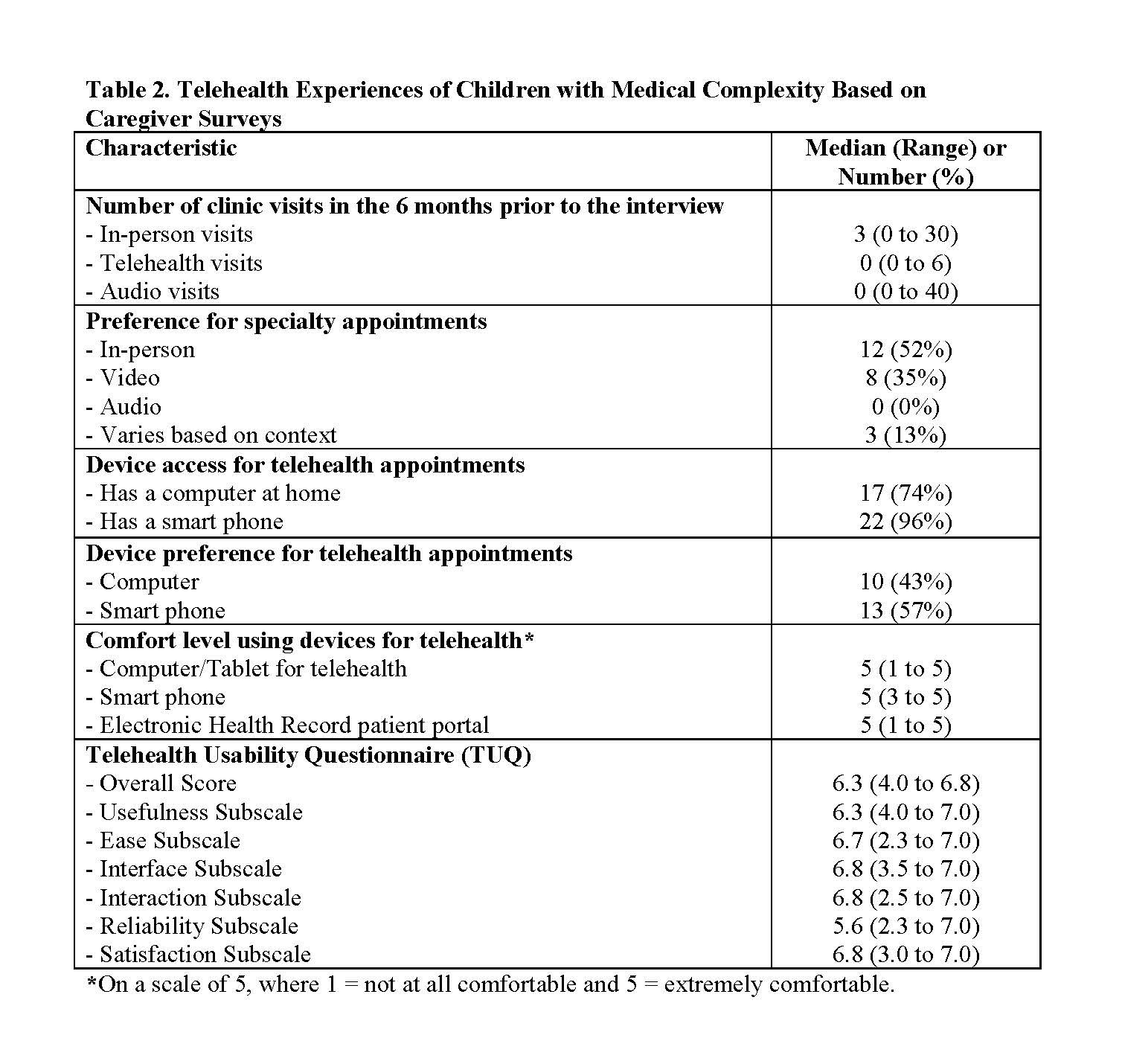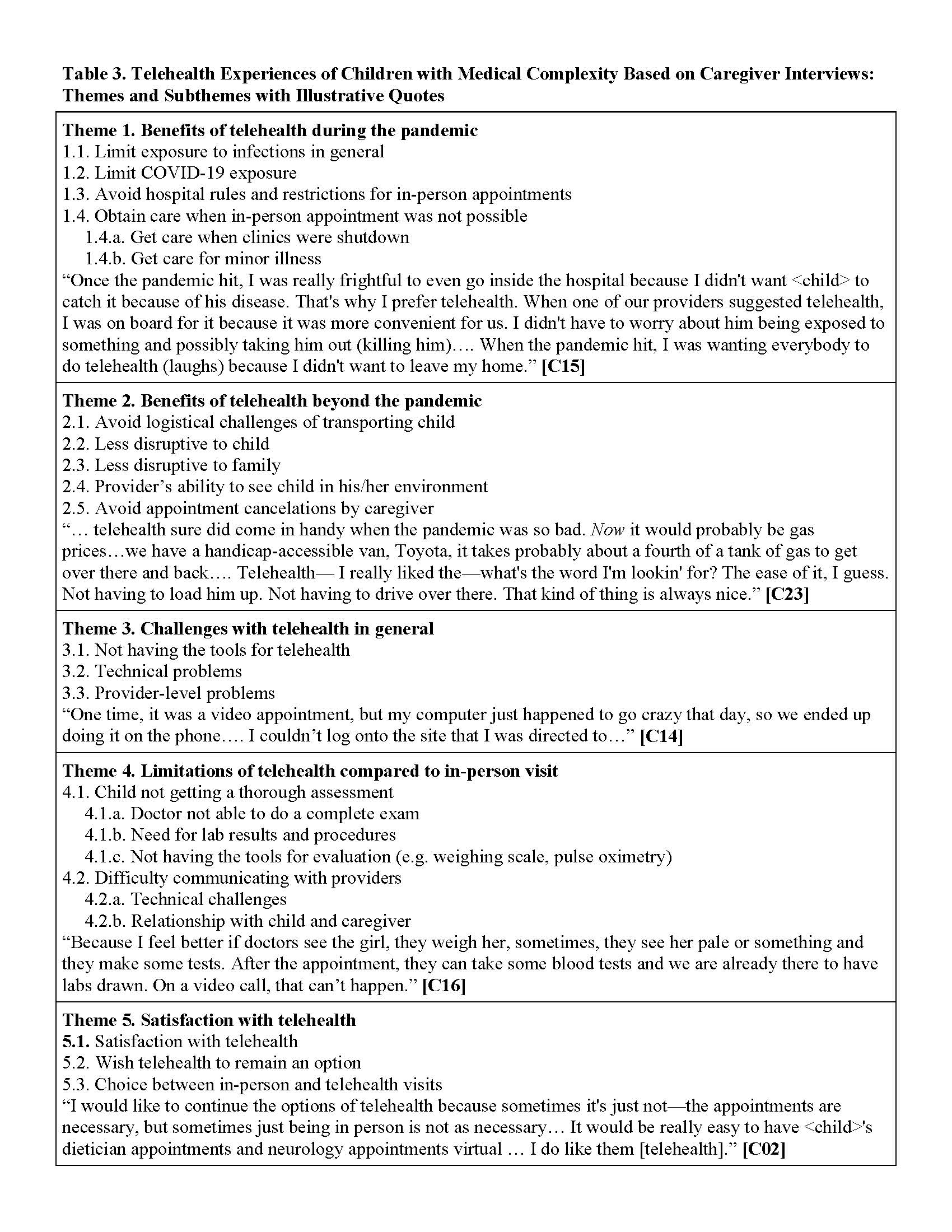Children with Chronic Conditions
Children with Chronic Conditions 2
301 - Telehealth for children with medical complexity during the COVID pandemic: A qualitative study exploring caregiver experiences
Publication Number: 301.204

Savithri Nageswaran, MD, MPH (she/her/hers)
Professor
Wake Forest School of Medicine of Wake Forest Baptist Medical Center
Wake Forest School of Medicine
Winston-Salem, North Carolina, United States
Presenting Author(s)
Background: Children with medical complexity (CMC) receive care from many clinicians. Telehealth became an option for healthcare delivery during the COVID-19 pandemic.
Objective:
The objective of this paper is to describe caregivers’ experiences about telehealth for CMC.
Design/Methods: This qualitative study conducted between February and April 2022 in North Carolina involves semi-structured interviews with 23 caregivers of CMC (15 English; 8 Spanish) about their perspectives on the benefits and challenges of telehealth for their children. We purposively sampled children in 6 subgroups (Black race, rural residence, age >10 years, telehealth nonuser, ≥10 appointments/year, and Spanish caregiver language). Qualitative data were audio recorded, transcribed, coded, and analyzed using thematic content analysis. A survey elicited caregivers’ experiences with telehealth and included Telehealth Usability Questionnaire (TUQ).
Results:
Characteristics of children and caregivers are presented in Table 1. Survey results showed caregivers’ satisfaction with telehealth to be high (Table 2). Five qualitative themes (Table 3) emerged: (1) Telehealth allayed caregivers’ fears about their children’s exposure to COVID-19 and mitigated the challenges with in-person visits during the pandemic. (2) The benefits of telehealth extended beyond caregivers’ fear of exposure to infection and pandemic challenges and helped address the many disruptions for the child and caregiver associated with in-person visits. (3) Telehealth presented technological (e.g. internet connectivity problems) and logistical challenges (e.g. not being offered by providers) to caregivers and providers. (4) There were clinical limitations to telehealth compared to in-person visits, including inadequate evaluation of the child and caregiver-provider communication. (5) Caregivers were satisfied with telehealth and wished telehealth to remain an option beyond the pandemic. There were no differences in themes based on subgroup categories, participant characteristics, or TUQ responses. The only exception was that the three caregivers who either did not use or had low comfort level with electronic health record patient portal were Spanish-speaking interview participants.
Conclusion(s):
Caregivers of CMC find telehealth to be a viable option for outpatient care delivery for their children, even beyond the pandemic. There are many challenges with telehealth that need to be addressed. Implementation of telehealth in clinical practice and policies to make telehealth permanent could improve access to care for CMC..jpg)


